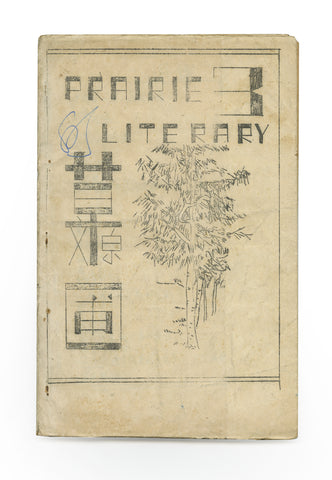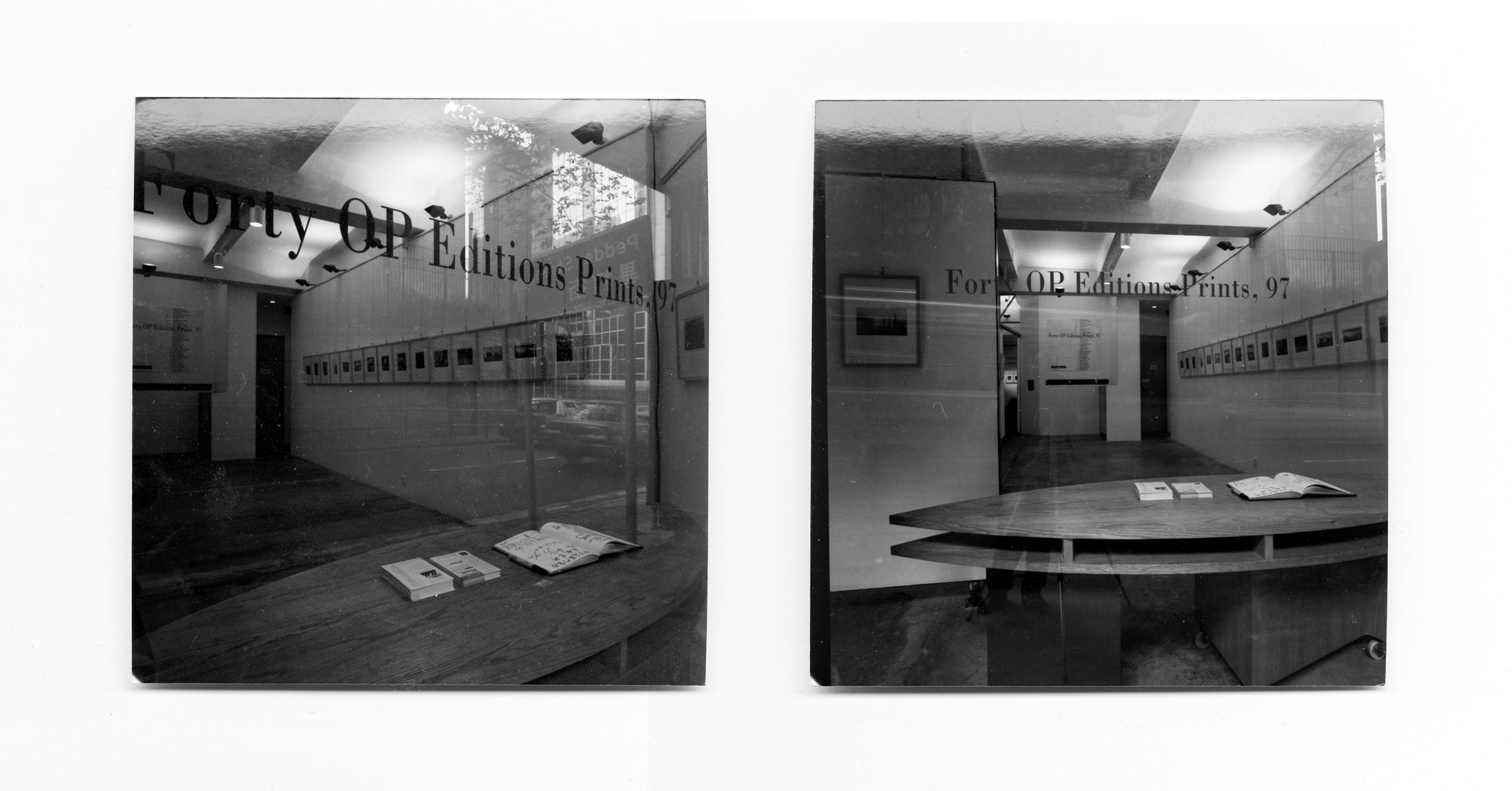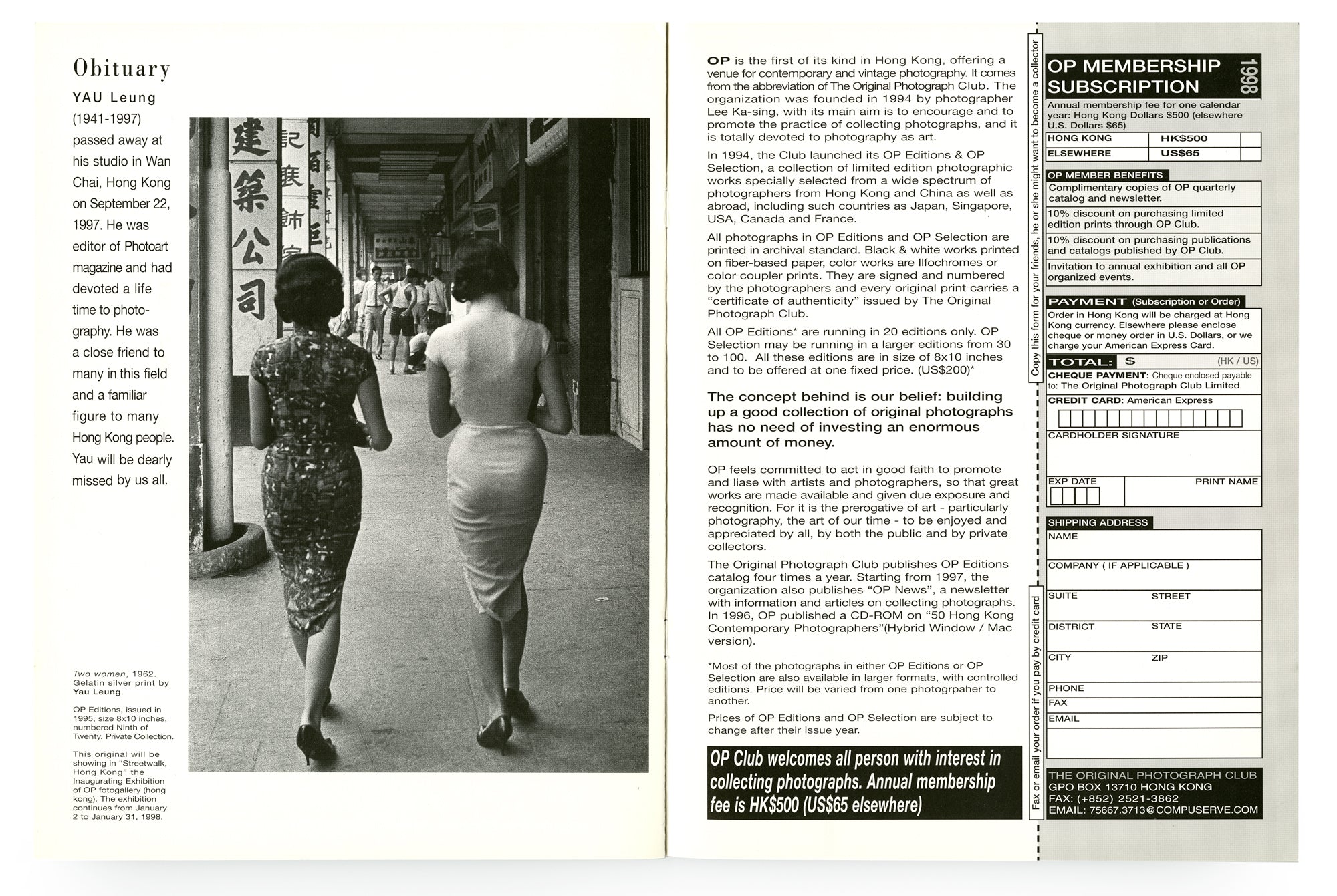It all began with his love of publications (since a teenager), the people he met, the money he saved up from skipping lunch and spent it on books his school library didn’t carry. The enthusiasm and mad love still hold up to this very day. Thus the publications he produced over the fifty years, from the primitive period of stencil print, letter-press, early offset to desktop offset, ebook, pdf, web-based to the recently matured print-on-demand publishing mode, all these processes could easily equate to half of the story of the history of printing. Mostly the effort of a one-man band, I jumped onto Ka-sing's band wagon to ride with him around the late seventies.

PRAIRIE LITERARY, issue 3, July 1968, Ka-sing co-founded this publication when he was 14 years old.
From seed, womb to flowering
Through our long publication production history, let me just pick a pivotal period, focus on one publication - OP News, and elaborate on it. This publication, produced between 97 and 98, could very well reflect and sum up a portion of the photographic movements in Hong Kong during that decade. This well-presented, transparent-mat-varnished 8.5 x 11 inch black and white publication has only 8 pages, and a total number of six issues published from January 1997 to September 1998.
OP News was the fruit of DISLOCATION magazine (NuNaHeDuo 女那禾多 1992-99) and The Original Photograph Club (OPC 1994-99). To recap a little history, DISLOCATION (alias NNHD) was a monthly Hong Kong contemporary photography journal edited by Lee Ka-sing, Holly Lee and Lau Ching Ping (later joined by Patrick Lee and Blues Wong). Two years later, in 1994, OPC was initiated to facilitate the role of a Print Program (OP Editions), opening up a pathway for people to acquire photography in their collections.

Inaugural issue of DISLOCATION (NuNaHeDuo), January 1992.
OP News, working hand in hand with NNHD and OPC, carried the mission to disseminate ideas, news and development of photography in Hong Kong. Of equal importance, it informed the importance of collecting photographs, especially from local practitioners. Every issue, in its brief eight pages it published a main article, an artist’s profile, news about OPC and other related exhibition events. It had published five articles altogether, the first essay was On Collecting Photograph by Lee Ka-sing. For the second issue, Matthew Turner, who taught at the Polytechnic University’s School of Design from 1981 to 1994, was invited to contribute an article on Hong Kong Photography. The third article titled Hong Kong At The Cosmopolitan Crossroads was written by Norman Jackson Ford, a photographer and art educator based in Hong Kong. For the fourth issue, with permission from Tokyo Museum of Photography, we published an excerpt from the essay by Nakamura Hiromi on contemporary photography in Japan. We featured an article on the veteran photographer Ngan Chun Tung 顏震東 (1927-2005) in the fifth issue of OP News, written by yet another veteran photographer Mak Fung 麥烽 (1918-2009). By the time we reached the sixth issue, we decided to make use of the entire issue to feature the OP Editions Print Program. One hundred photographs were selected from the collection, and printed as thumb-nail images, filling up all six pages of the magazine. That was also the last issue of OP News. But we didn't stop there, in fact this very last issue leaded us to the path of publishing the full colour OP Print Program catalogue in 2002. It was a handy 8 x 5.5 inch brochure with over 200 works in 32 pages. It featured a wide array of photographs comprising of Canadian, Mexican, Chinese and Japanese artists.

OP, September, 2002. 8 x 5.5 inches, 32 pages.
In the first OP News (Issue 1/1) Ka-sing wrote an article On Collecting Photograph and shed some light on the history of the OPC.
“In 1992, we published ‘DISLOCATION’, a monthly journal on Hong Kong contemporary photography. Photo-collectors approached us to purchase original prints from works featured in the publication. There was a lack of an organized and systematic approach to the handling of photograph as fine art, including the awareness of archival standards and concept of issuing photographs in limited editions. This brought about the idea of OP Club - the virtual photo-gallery which photographers would observe all necessary conditions in photo-collecting. Besides the direct mail-order system of channelling original photographs, we have also held two successful exhibitions of our released prints at the Hong Kong Fringe Club during the end of 1995 and 1996. The Original Photograph Club has provided a most recognized channel offering local and overseas collectors an array of highly appreciated photographic work….”
OP Editions
The idea of the creation of OP Edition was a novel one. For the first time in Hong Kong, it had initiated a photographic print program which adhered to the standard and rules in photo-collecting. Ka-sing and I co-curated the program and attended all administrative and organizing work. It would be a quarterly print program, each quarter would feature ten photographers, each would be required to contribute an image in 20 editions, printed in the size of 8 by 10 inches. These prints we referred to as OP Editions. OP Editions followed closely the museum standard, it required photographers to submit their photographs as gelatin silver prints, cibachromes, colour-coupler prints, or alternative process like transfer prints. Besides promoting the practice of photo-collecting, it also acted as a channel for photographers to exchange their prints. In the Program, each contributor can choose some prints of his/her choice from the same issue they were being featured, whereas the remaining prints would be released to the market to support its operation. Since each photographer might have already set certain print size for their work, which was usually in a larger format, OP Edition prints could readily serve the purpose of a ‘sample print’ of their work. We published the quarterly OP Edition catalogues, organizing annual and thematic exhibitions in different venues. The whole idea really turned out well and set the scene for a positive photo-collecting environment. OP Editions continued to thrive until 1999. By that time there were already some 190 works, well over three thousand prints in the program.

OP Editions quarterly catalogues, 1995. 5.5 x 5.5 inches, 24 pages.
Gallery-on-Paper to Gallery-on-Borrowed-Spaces
In the introductory stage, there was no gallery space, the exhibition of OP Editions was featured within the quarterly catalogues. Soon we moved quickly to line up gallery space at the Fringe Club, a not-for-profit arts organization, and presented three successful OP Editions annual exhibitions there (1995, 96 and 97). In addition, we ventured with commercial venues such as NuConcepts, a design and modern furniture store to organize curated thematic exhibitions. If we describe the DISLOCATION publication, noting our earlier concept as a gallery-on-paper, then this was the period of gallery-on-borrowed-spaces, before we could actually secure an exhibition venue of our own.

OP annual exhibition (1997) at the Fringe Club gallery.
A few years before the first photo gallery in Hong Kong
The early stage of the DISLOCATION days was memorable. Ka-sing and I, Ching-Ping were like the three Musketeers, fighting unfavourable conditions to create suitable climate, which we hoped, could help and encourage self-expression in local photography. We used our photo studio as a base for such activities, earnings from our assignments were used to support DISLOCATION and OP Editions. We were energetic, full of survival skills, things were straight-forward with one common goal in mind - to discover and deliver the voice of our time. Those were the innocent and creative years, we endorsed artists of cross discipline to interact with each other, without prejudice, privileges and any market in concern.
Gallery as Home
At the end of 1997, when our family moved to Toronto, we decided to convert the studio in Hong Kong to a photo gallery. Ka-sing had to fly back and forth between the two cities to oversee the transitional procedure. Within a few months time, the former photo studio was converted into a gallery. On the second day of January in 1998, OP fotogallery, the first photography gallery in Hong Kong was officially born. The OP Editions exhibitions (1998 and 1999) were brought back there, to the gallery where we could now call home. There was more good news, DISLOCATION had received a publication grant from the Hong Kong Arts Development Council; on top of that, our proposal of NCP (NuNaHeDuo Centre of Contemporary Photography) had also been approved. NCP would utilize the OP fotogallery space to continue the discourse of photography. It would organize educational programs, artists’ talks, photographers meeting, monthly exhibitions and interact with local, as well as overseas communities. After years of active participation, the studio-turned-gallery, viewed by some as the birth place of contemporary Hong Kong photography, was in full swing.

OP fotogallery (January 1998 to March 2001) at Number 5 Prince Terrace, Hong Kong.

Grand opening of NuNaHeDuo Centre of Contemporary Photography on April 28, 1998. it was officiated by Vincent Chow, the chairman of Hong Kong Arts Development Council. The inaugural exhibition PLAYDIUM, was co-curated by Sabrina Fung and Lee Ka-sing. Four artists were featured: Hideo Suzuki, Lo Yin shan, Wilson Tsang and Wong Kai Yu.
The original idea of the photo gallery, in a certain degree, was inspired by Helen Gee, the founder of the first important photo gallery in New York - the legendary Limelight Gallery (1954-1961). Our departure from Hong Kong, apart from family reason, also gave us the opportunity to connect Hong Kong photography outside its boundary. The set up the OP fotogallery Toronto in 2000 (later changed to Lee Ka-sing Gallery) was aiming to promote and synchronize with the Hong Kong activities. Even though we landed on the wrong soil we persisted in running the Toronto gallery for almost eight years, bridging Asian and Canadian photography, again, employing only our personal resources.
Despite all the good ground work, and later supports, people always wonder why the Hong Kong photo projects didn’t last. In hindsight, for all the basic necessities and good wills the government funding offered, we are wondering, now, more than ever, whether it was truly a positive force. In the many years of self-support, we got through difficult stages, weighing out our strengths and weaknesses, we could and always would subsist on a lean level of survival. The grant was a welcoming one but did not guarantee its stability. The will to fight challenging climate had shifted to fight bureaucratic constraints. The organization committee gradually fell stagnant and dysfunctional. In mid-March of 2001, the OP fotogallery in Hong Kong presented Erotos by Araki Nobuyoshi, which was, in reality, the last picture show.

Gallery guest book, the last exhibition (EROTOS by Nobuyoshi Araki) at OP fotogallery, Hong Kong.
The missing Apollo
However, the sixth, which is the last issue of OP News, was full of hope and sunshine. It did not foresee its short life span but rather a rosy future of Hong Kong photography interacting with international communities. The cover photograph 'Male Torso', which featured a classic body portrait by Almond Chu, was exhibited during the millennium at Lee Ka-sing Gallery as an OP Editions print. In the opening, it captured the eye of an Italian visitor. Feeling a deep resonance and struck by the beauty of its exquisite black and white, he bought the print without a blink. The sweeping power of art, we immediately thought, was transboundary! After handing us his credit card, he added, “To me, I think of it as the missing sculpture of Apollo, its luscious, marble-like body gleams with light gushing out from the slit of a heavenly window…, I’m so thrilled, a moment beyond myself, nothing can elicit that feeling as much as this photograph…”. Yes, everything is connected, and that makes me believe there’s a spiritual side of Ka-sing’s love of publications, they are more than just papers, or binary digits, they hold multitudes, and essentials, something, everything we’d experienced and loved, our heartbeats.
OP NEWS 1/1 Issued date January 1997
Cover: OP Editions, 96 exhibition on site at the Fringe Club Gallery, Hong Kong •
An article On Collecting Photograph by Lee Ka-sing • A complete list of OP editions photographs published in 1995 • This Side Towards Lens (photo events and news) • Artist Profile: Yau Leung.

OP NEWS 1/2 Issued date April 1997
Cover: Photograph by So Hing Keung
An article On Hong Kong Photography by Matthew Turner • Announcement of OP Editions, 97 to be exhibited at NuConcepts in May • This Side Towards Lens (photo events and news) • Artist Profile: So Hing-Keung.
OP NEWS 1/3 Issued date July 1997
Cover: A Hong Kong Portfolio exhibition on site at the Hong Kong Convention Centre, May 15, 1997.
An article Hong Kong at the Cosmopolitan Crossroads by Norman Jackson Ford • Announcement of A Hong Kong Portfolio exhibition at the Hong Kong Convention Centre and the Fringe Club Gallery • This Side Towards Lens (photo events and news) • Artist Profile: Karl Chiu.

OP NEWS 1/4 Issued date December 1997
Cover: Photograph by Yamashita Masahiko
An article on Contemporary Photography in Japan by Nakamura Hiromi • Announcement of the inauguration of the OP fotogallery in January 1998 • This Side Towards Lens (photo events and news) • Obituary: Yau Leung (1941-1997).



OP NEWS 2/1 Issued date March 1998
Cover: Photograph by Ngan Chun Tung
An article on Ngan Chun Tung by Mak Fung • Streetwalk, Hong Kong at OP fotogallery opening photographs • This Side Towards Lens (photo events and news).


OP NEWS 2/2 Issued date September 1998
Cover: Photograph by Almond Chu
An announcement on the opening of NCP (NuNaHeDuo Centre of Photography) • This Side Towards Lens (photo events and news) • Thumb nail catalogue of a hundred prints from the OP Editions.




Back-cover of the first four issues of OP News - an announcement of the release of "50 HONG KONG CONTEMPORARY PHOTOGRAPHERS" (1996), a CD-rom published by OPC, edited by the committee of NuNaHeDuo Centre of Contemporary Photography.

++++++++++++++++++++++++++
